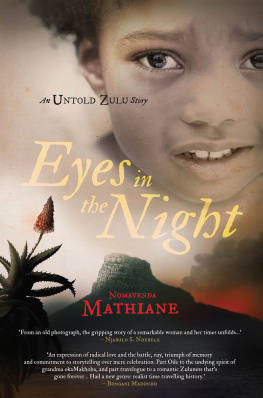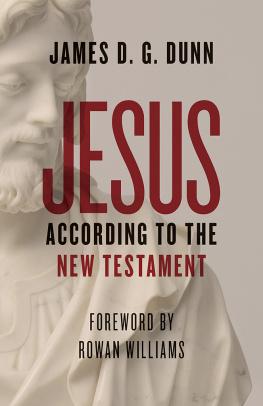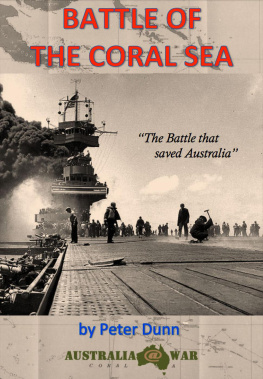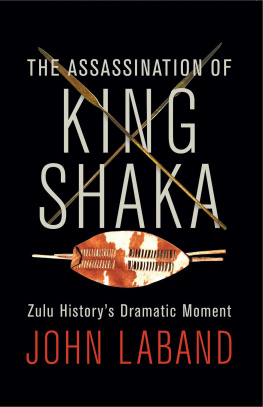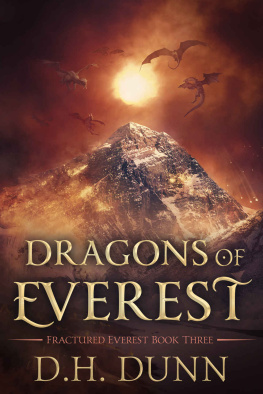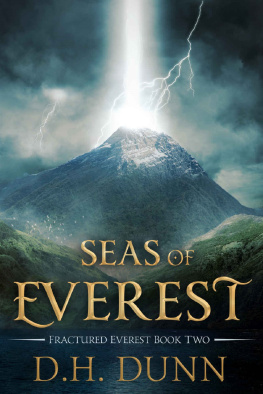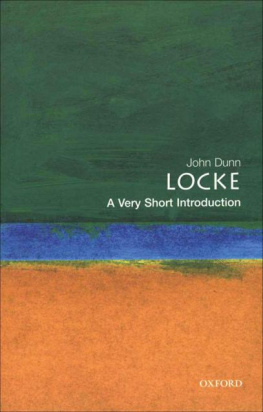John Dunn. ( Courtesy Mr Dan Dunn )
Published in Great Britain in 2014 by
Pen & Sword History
an imprint of
Pen & Sword Books Ltd
47 Church Street
Barnsley
South Yorkshire
S70 2AS
ISBN 978 1 78346 324 4
eISBN 9781473837386
A CIP catalogue record for this book is available from the British Library
All rights reserved. No part of this book may be reproduced or transmitted in any form or by any means, electronic or mechanical including photocopying, recording or by any information storage and retrieval system, without permission from the Publisher in writing.
Typeset in Ehrhardt by
Mac Style, Bridlington, East Yorkshire
Printed and bound in the UK by CPI Group (UK) Ltd, Croydon,
CRO 4YY
Pen & Sword Books Ltd incorporates the imprints of Pen & Sword
Archaeology, Atlas, Aviation, Battleground, Discovery, Family
History, History, Maritime, Military, Naval, Politics, Railways,
Select, Social History, Transport, True Crime, and Claymore Press,
Frontline Books, Leo Cooper, Praetorian Press, Remember When,
Seaforth Publishing and Wharncliffe.
For a complete list of Pen & Sword titles please contact
PEN & SWORD BOOKS LIMITED
47 Church Street, Barnsley, South Yorkshire, S70 2AS, England
E-mail: enquiries@pen-and-sword.co.uk
Website: www.pen-and-sword.co.uk
Contents
The wrong box Disgusted with civilisation Start for Zululand Flightbetween Cetywayo and Umbulazi Continuation of fight Flight ofUmbulazis party Massacre in the Tugela River
Start for Umpandes kraal Arrival at same Go to Cetywayos Introduction to him Rescue the Traders cattle Return to CaptainWalmsley Go to dwell at the Ungoye Forest
Cetywayo doubts me Hunting stories ditto ditto ditto
Discontinue hunting trips Dissuade Cetywayo from sending out Impi Go toDUrban and get guns, &c., for Cetywayo from the Natal Governor Startan independent tribe Mr. T. Shepstone at Nodwengo Ngoza in trouble Misunderstanding with Mr. Shepstone
Umpandes death in 1872 Grand muster of Zulus A large hunt UpperZulus join muster Ludicrous followers No method Makeni
Fear of Northern Zulus Uneasiness of Cetywayo Avert a massacre Mr. Shepstone at Intonjaneni Another hunt
Cetywayos ancestors Fire! Meet Mr. Shepstone Izibongi excited
Fire again Mr. Shepstone sets off for Natal His letter to me Ditto Thechlorodyne man Fearful death Masipula
Collection of Pandes cattle Land schemes The King threatens theAmaswazi Governor of Natal objects Dr. Smith and young Colenso try toact for the King Cetywayo objects
Fight at Undini kraal Go back to my camp Fearful scene there Affecting sights Save the life of the Colonel and the Ungobamakosi Regiment,Usidcweledcwele
Change of the Kings tone My letter to the A.P.S. Society Ditto Zulusuperstition Serious aspects of affairs Zulu intrigue Zulu warriors excited
Troops massing in Natal Ultimatum to Cetywayo Ditto Ditto
Ultimatum never reaches Cetywayo Mr. J.W. Shepstones letter to me Lord Chelmsford My tribe cross the Tugela into Natal Deprived of myguns Scare of Border Agent His deplorable plight
Meet Lord Chelmsford My poor messengers Chelmsfords letter to me Decide to go with him Battle of Ginginghlovo Defeat of Zulus Soldiersshoot my scouts
My opinion of Lord Chelmsford Letter from Major Poole Letter fromCetywayo
I arrive at Fort Chelmsford Try to get Zulus to submit We advance to PortDurnford Arrive there General Crealocks letter to Wolseley about me Latter holds meetings of Chiefs
I am placed under Sir Garnet Fixed Bayonets Meeting of head menof the country Remarks
Copy of my Deed of Chieftainship Ditto Ditto Wolseley goes toSekukuni Remarks Letters from abroad Letter from Sir Garnet Wolseleyto the Earl of Derby
Appendix The End
Foreword
A rchbishop Desmond Tutu has described the people of South Africa as The rainbow people of God. In doing so, he was referring to what many thoughtful people all over the world regarded as the miracle of a democratic transition to democracy in 1994 after decades of strife.
Racial interaction over more than four centuries conjures up a veritable kaleidoscope of images to millions of South Africans and people from all over the globe. One of the most fascinating centres around the rather legendary white chief of Zululand, John Dunn. Dunn, a Scotsman, became a confidant of the last and powerful king of the Zulu, King Cetshwayo kaMpande, and married forty-eight of the Kings subjects after taking a young 15-year-old daughter of a Durban businessman as his first bride.
What is sad is that there are so few South Africans who know much detail about the life and times of this remarkable man. Hopefully, this small but important re-print will change that.
John Robert Dunn, described as entrepreneur, politician, arms dealer, trader and hunter, whose loyalties were said to lie where self-interest and gain prevailed, was arguably a central and controversial figure in nineteenth century Zulu history.
Advisor and confidant to King Cetshwayo; Natal Colonial Government labour recruiter; Lord Chelmsfords military and political adviser during the Anglo-Zulu War of 1879; Sir Garnet Wolsleys post-war political advisor and the holder of vast tracts of land north of the Thukela River (grants by both the Zulu monarch and subsequently the British as a consequence of the post-war settlement), Dunns role in shaping both destiny and events of the time was significant.
To this day his legacy lives on surrounded, as in his lifetime, by controversy. His progeny of well over one hundred and twenty, today many thousands, are involved in bitterly contested land claims, areas that in the nineteenth century, came under his direct control and referred to by him as Dunnsland .
The great tragedy is that his copious writings and recordings of events that may have thrown greater light on the events that shaped Zulu history were destroyed. At the outbreak of the Anglo-Zulu War in 1879 the Zulus, provoked by a perceived betrayal of their monarch Cetshwayo by Dunn when he sided with the British, torched his homestead of Mangethe, the dwelling where his manuscripts were housed. Tragically, eighteen vital years of recorded Zulu history were lost forever.
Who then was this White Chief, hated and reviled by many, including the liberal Bishop Colenso of Zululand, yet loved and adored in equal numbers by his followers and who, in significant ways, influenced the history of Zululand in the nineteenth century.
Of Scottish ancestry, Dunns father, Robert Newton Dunn, was born in Inverness, Scotland, in 1795. In his mid-twenties, he left the shores of Scotland to settle in the Eastern Cape, South Africa. In 1824, Dunn married Anne Biggar, the daughter of Alexander Biggar, an ex-military man of dubious reputation who was reputed to have embezzled Regimental funds and subsequently suffered the indignity of being cashiered. Both the Dunns and Biggars moved to Port Natal where the call of adventure proved alluring.
John Robert Dunn was born in 1834, either shortly before the move from the Eastern Cape or in Port Natal, the exact place and date have not been determined. He was the third of four children, the others all being girls. Robert Dunn thrived commercially as a trader and hunter and, in 1839, in an expression of his new-found wealth, built a substantial dwelling on the ridge overlooking Durban Bay named Sea View on two and a half thousand acres of land.


